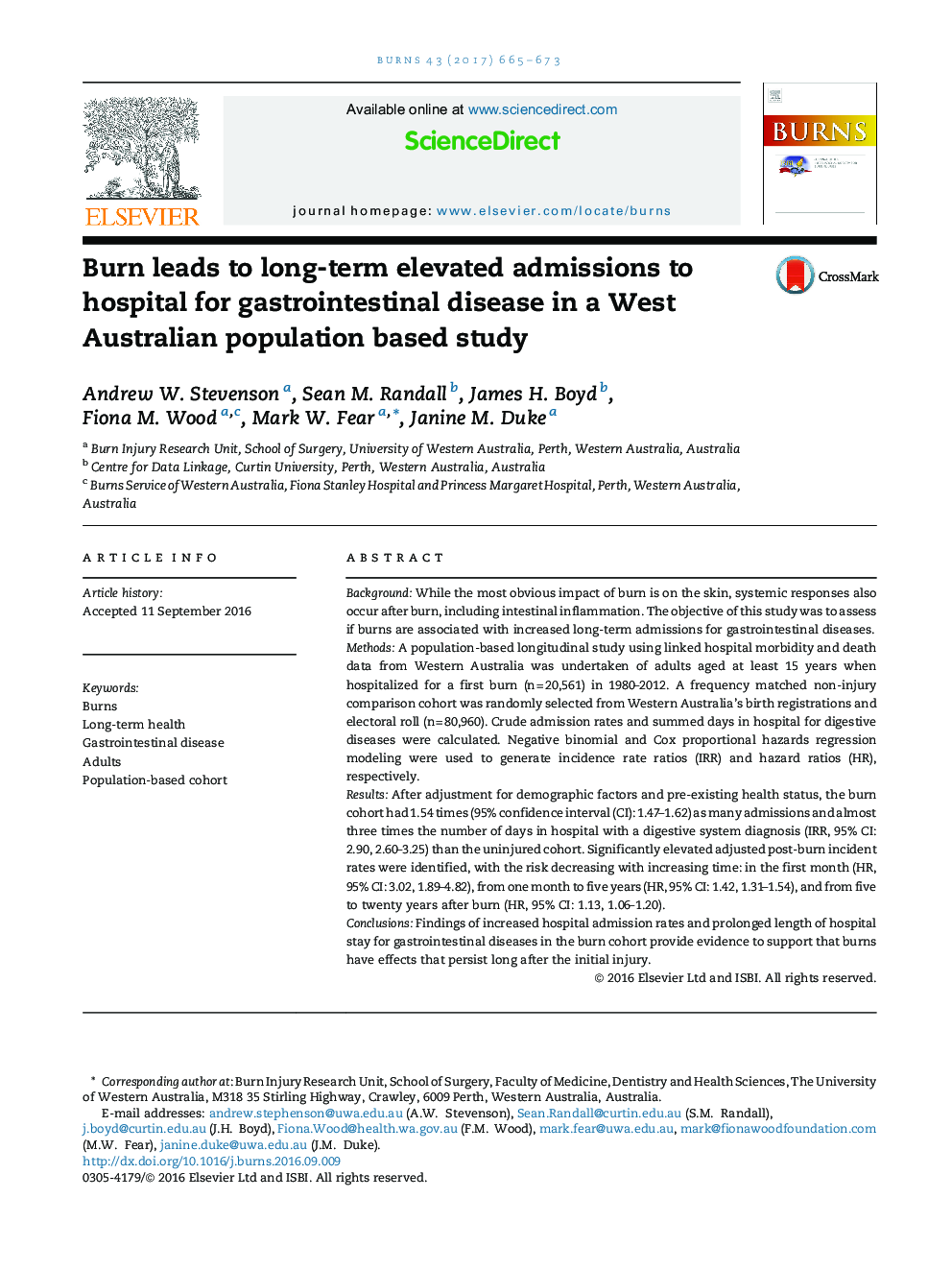| کد مقاله | کد نشریه | سال انتشار | مقاله انگلیسی | نسخه تمام متن |
|---|---|---|---|---|
| 5636297 | 1406666 | 2017 | 9 صفحه PDF | دانلود رایگان |
- After burn adults have increased hospital admissions for gastrointestinal disease.
- The risk decreases for some disorders with time but for others remains constant.
- Both alcoholic and non-alcoholic liver disease is elevated post-burn.
BackgroundWhile the most obvious impact of burn is on the skin, systemic responses also occur after burn, including intestinal inflammation. The objective of this study was to assess if burns are associated with increased long-term admissions for gastrointestinal diseases.MethodsA population-based longitudinal study using linked hospital morbidity and death data from Western Australia was undertaken of adults aged at least 15 years when hospitalized for a first burn (n = 20,561) in 1980-2012. A frequency matched non-injury comparison cohort was randomly selected from Western Australia's birth registrations and electoral roll (n = 80,960). Crude admission rates and summed days in hospital for digestive diseases were calculated. Negative binomial and Cox proportional hazards regression modeling were used to generate incidence rate ratios (IRR) and hazard ratios (HR), respectively.ResultsAfter adjustment for demographic factors and pre-existing health status, the burn cohort had 1.54 times (95% confidence interval (CI): 1.47-1.62) as many admissions and almost three times the number of days in hospital with a digestive system diagnosis (IRR, 95% CI: 2.90, 2.60-3.25) than the uninjured cohort. Significantly elevated adjusted post-burn incident rates were identified, with the risk decreasing with increasing time: in the first month (HR, 95% CI: 3.02, 1.89-4.82), from one month to five years (HR, 95% CI: 1.42, 1.31-1.54), and from five to twenty years after burn (HR, 95% CI: 1.13, 1.06-1.20).ConclusionsFindings of increased hospital admission rates and prolonged length of hospital stay for gastrointestinal diseases in the burn cohort provide evidence to support that burns have effects that persist long after the initial injury.
Journal: Burns - Volume 43, Issue 3, May 2017, Pages 665-673
